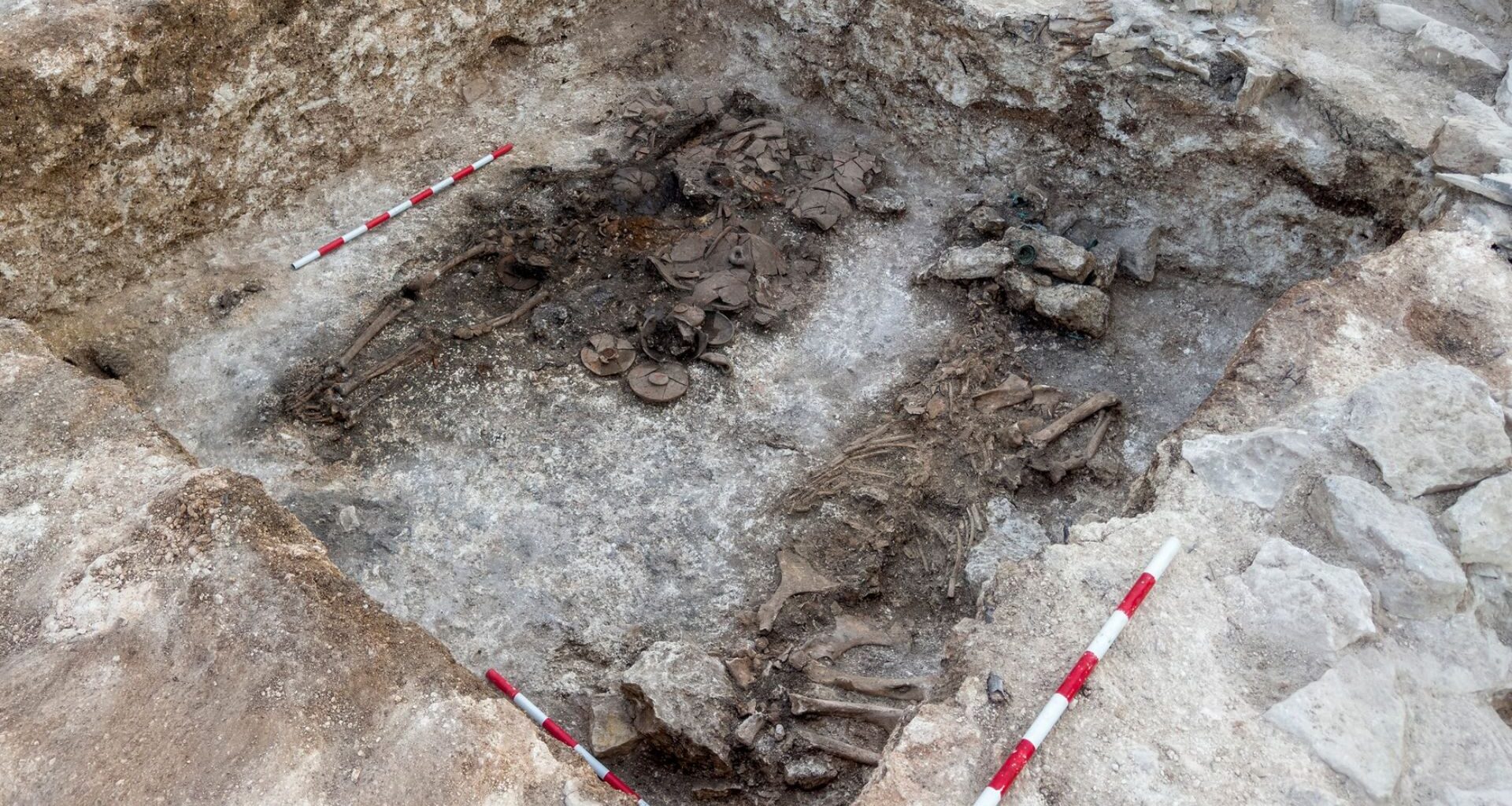Archaeologists in southeast Bulgaria have unearthed the lavish 2,100-year-old grave of a Thracian warrior, buried alongside his warhorse and crowned with a dazzling gilded silver wreath. Nicknamed the “Lord of Sakar,” this aristocrat was laid to rest with an opulence unmatched in Bulgarian archaeology — a window into a time when warriors ruled the Balkan highlands.
The discovery was made during excavations linked to modern infrastructure works and first reported by Live Science, which detailed the objects and burial layout found at the site. Further analysis is underway to better understand the social context surrounding the grave.
2024 Solar Park Dig Uncovers Elite Burial
The discovery came in 2024, during routine excavations tied to the installation of a solar park near the Sakar Mountains. Two burial mounds were identified by a team from the Bulgarian Academy of Sciences, revealing a pair of richly furnished tombs — one belonging to a young woman, the other to a middle-aged male warrior now known as the Lord of Sakar.
According to the Municipality of Topolovgrad, the man’s burial is now considered the richest Thracian tomb ever found in Bulgaria.
A Warrior of Wealth, Myth, and Power
Preliminary analysis indicates the Lord of Sakar was between 35 and 40 years old at the time of his death, which occurred during the late Hellenistic period (150–100 B.C.), a time of political flux between Greek and emerging Roman rule in the region of Thrace.
His grave tells the story of a warrior elite — likely one of the “04 warrior lords” who dominated local power structures. The contents of his tomb reveal not only his wealth, but his mythic status:
A gilded silver wreath, discovered encircling his skull
A unique gem-covered knife, likely ceremonial
Iron spears, a shield, and a set of ceramic and glass vessels
Silver jewelry finely crafted in the Hellenistic style
His warhorse, buried beside him, was honored with grave goods of its own:
A gilded bronze harness depicting Hercules defeating a giant
Bronze animal motifs, referencing the labors of Hercules
A gold headpiece featuring the image of a snake
These symbols, drawn from Greek mythology, emphasize the warrior’s alignment with heroic archetypes — a hallmark of Thracian warrior-nobility at the time.
The Woman’s Tomb and a Nearby Sanctuary
The second burial mound, dated to the early 2nd century B.C., belonged to a young woman of evident high status. Among the preserved artifacts, archaeologists recovered two pairs of leather shoes, remarkably intact after two millennia, along with a wooden chest richly decorated with gold, silver, and jewels.
The tomb also contained numerous items made of gold, glass, and bronze, pointing to her elevated social position. Near her mound stood a sanctuary, dated to the second half of the 2nd century B.C. The site contained a large number of regional coins, possibly used in ritual offerings or funerary ceremonies.
A Public Debut for Thrace’s Buried Gold
The artifacts were unveiled to the public on August 12, as part of a national exhibition titled “The Glitter of Hellenistic Gold. The Lord of Sakar”. Hosted at the National Archaeological Institute with Museum in Sofia, the display will run through October 17, showcasing the artistry and symbolism of Thracian craftsmanship.
Reviving the Glory of the Warrior Elite
This discovery not only adds to the growing inventory of Thracian archaeology, but also revives interest in the warrior aristocracies that once dominated the mountainous frontier between empires.
“The golden treasures discovered in our lands testify to high craftsmanship, rich spiritual life and prosperous societies – said Evelina Slavcheva, president of the Bulgarian Academy of Sciences.”
The Lord of Sakar — buried in splendor, armored in mythology, and flanked by his horse — stands as a testament to a forgotten class of warrior-lords whose graves continue to whisper stories from beneath the Thracian soil.
